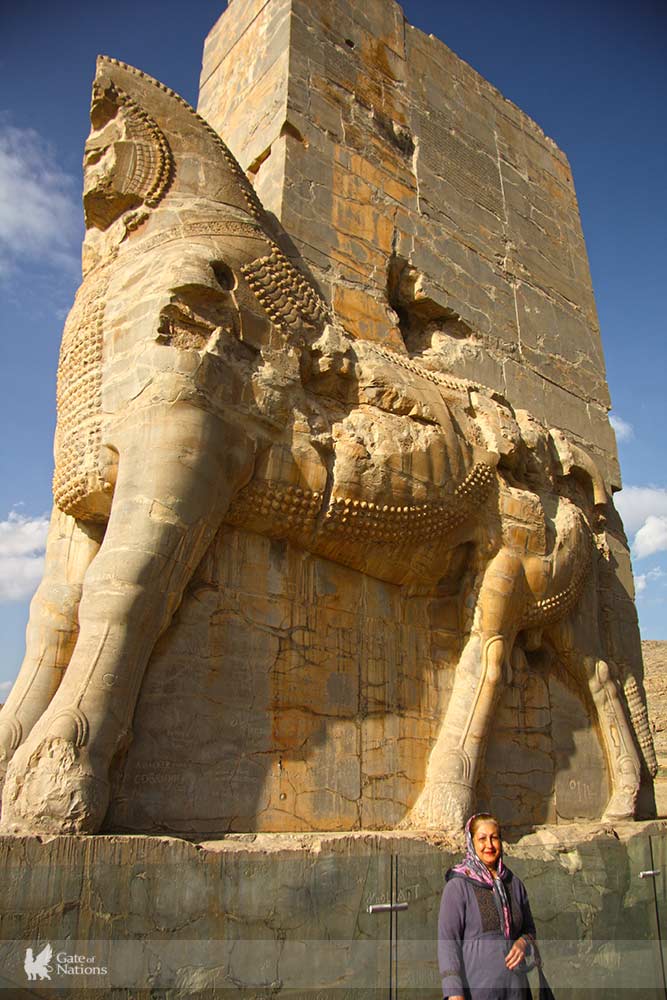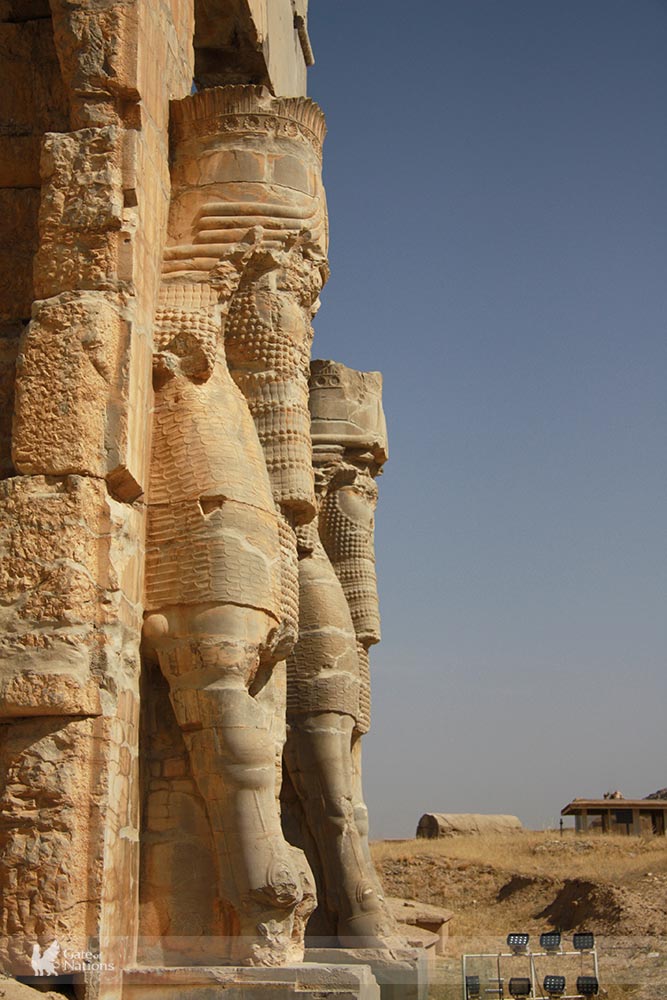The Western Portal for the historical site of Persepolis is called the Gate of All Nations.
As understood from the name of this portal, which was in fact a roofed iwan, it was the entrance place for kings, royalty, and visitors of the Achaemenid kings. Persepolis has three portals and you enter from the Western one.

On both sides of the western portal, there are two bulls with human faces that are looking at the west. You confront these two bulls with human faces placed on two platforms that are 1.5 meters high while ascending the stairs. These two figures, called Lamassu (bull-man), were adopted from Assyrians with some redesigning. For example, in Assyrian art, the bulls have five legs but these two figures in Persepolis have their natural four legs and are holding their rear legs in a movement position. The face adornments of these two figures are formed with a curly beard.
Between these two figures and on the walls each are established, are tablets in three languages and three types of cuneiform. The tablet facing the west (facing the field) is in the Elamite language. The middle tablet is written in ancient Persian language and the tablet facing east (facing the hall) is in the Babylonian or Akkadian language. But the meaning of the tablets are the same; they all read:
“A great god is Ahura Mazda, who created this earth, who created yonder sky, who created man, who created happiness for man, who made Xerxes king, one king of many, one lord of many.. .. I am Xerxes, the great king, king of kings, king of countries with different kinds of men, king in this great earth far and wide, son of king Darius, an Achaemenian, a Persian, son of a Persian, an Aryan, of Aryan stock”.
Inside this hall and on its surrounding a stone platform was established so that after getting Bareaam permission (permission for visiting the king), guests would sit on it. Apparently, the interior visage of this hall was covered with mosaics in colors of green, blue and orange with a decoration of palm. Today from the portal leading to the south and Apadana Palace, only the bottom side has remained and you can see the part that the door used to be placed on.






